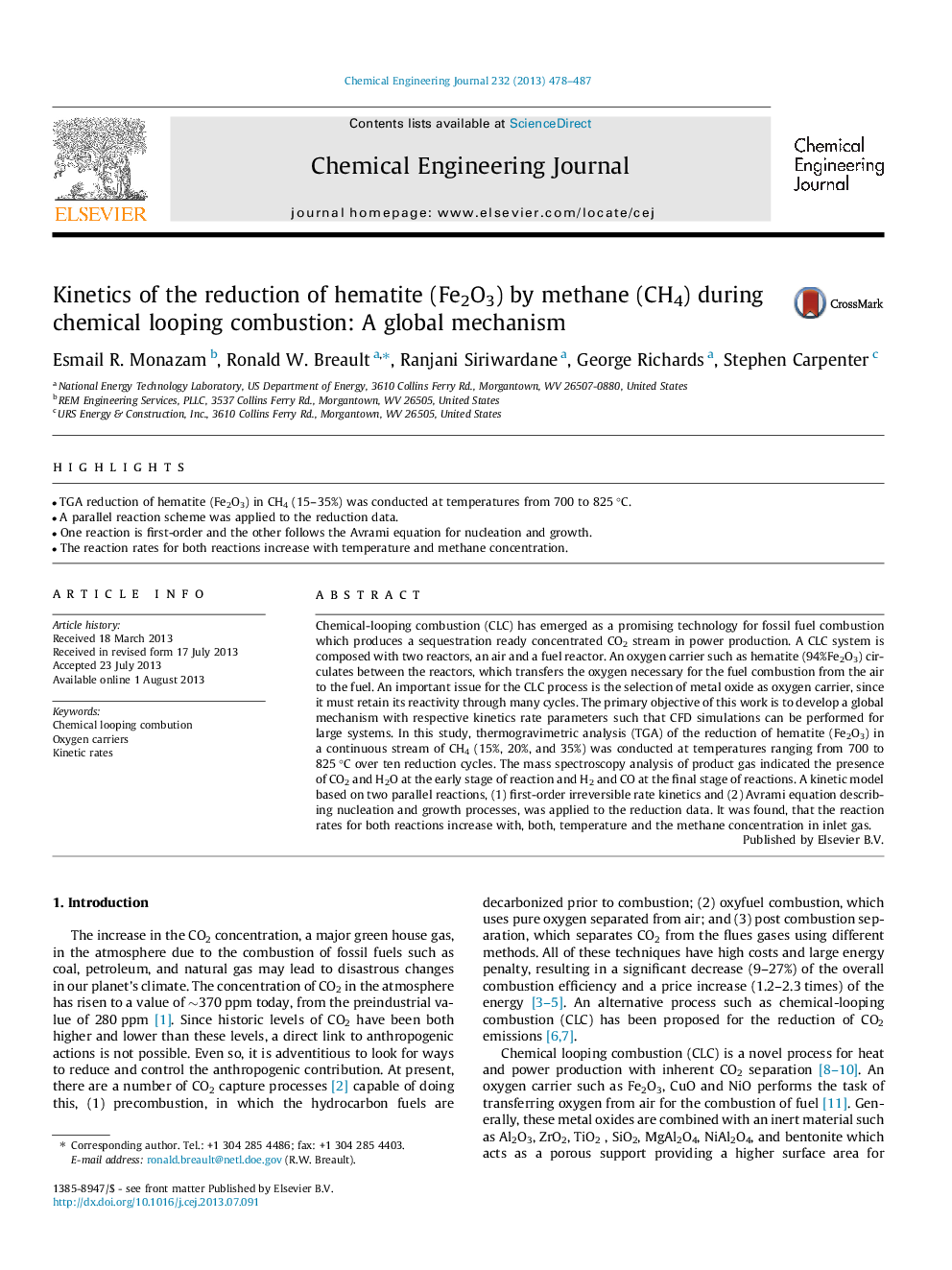| Article ID | Journal | Published Year | Pages | File Type |
|---|---|---|---|---|
| 148176 | Chemical Engineering Journal | 2013 | 10 Pages |
•TGA reduction of hematite (Fe2O3) in CH4 (15–35%) was conducted at temperatures from 700 to 825 °C.•A parallel reaction scheme was applied to the reduction data.•One reaction is first-order and the other follows the Avrami equation for nucleation and growth.•The reaction rates for both reactions increase with temperature and methane concentration.
Chemical-looping combustion (CLC) has emerged as a promising technology for fossil fuel combustion which produces a sequestration ready concentrated CO2 stream in power production. A CLC system is composed with two reactors, an air and a fuel reactor. An oxygen carrier such as hematite (94%Fe2O3) circulates between the reactors, which transfers the oxygen necessary for the fuel combustion from the air to the fuel. An important issue for the CLC process is the selection of metal oxide as oxygen carrier, since it must retain its reactivity through many cycles. The primary objective of this work is to develop a global mechanism with respective kinetics rate parameters such that CFD simulations can be performed for large systems. In this study, thermogravimetric analysis (TGA) of the reduction of hematite (Fe2O3) in a continuous stream of CH4 (15%, 20%, and 35%) was conducted at temperatures ranging from 700 to 825 °C over ten reduction cycles. The mass spectroscopy analysis of product gas indicated the presence of CO2 and H2O at the early stage of reaction and H2 and CO at the final stage of reactions. A kinetic model based on two parallel reactions, (1) first-order irreversible rate kinetics and (2) Avrami equation describing nucleation and growth processes, was applied to the reduction data. It was found, that the reaction rates for both reactions increase with, both, temperature and the methane concentration in inlet gas.
